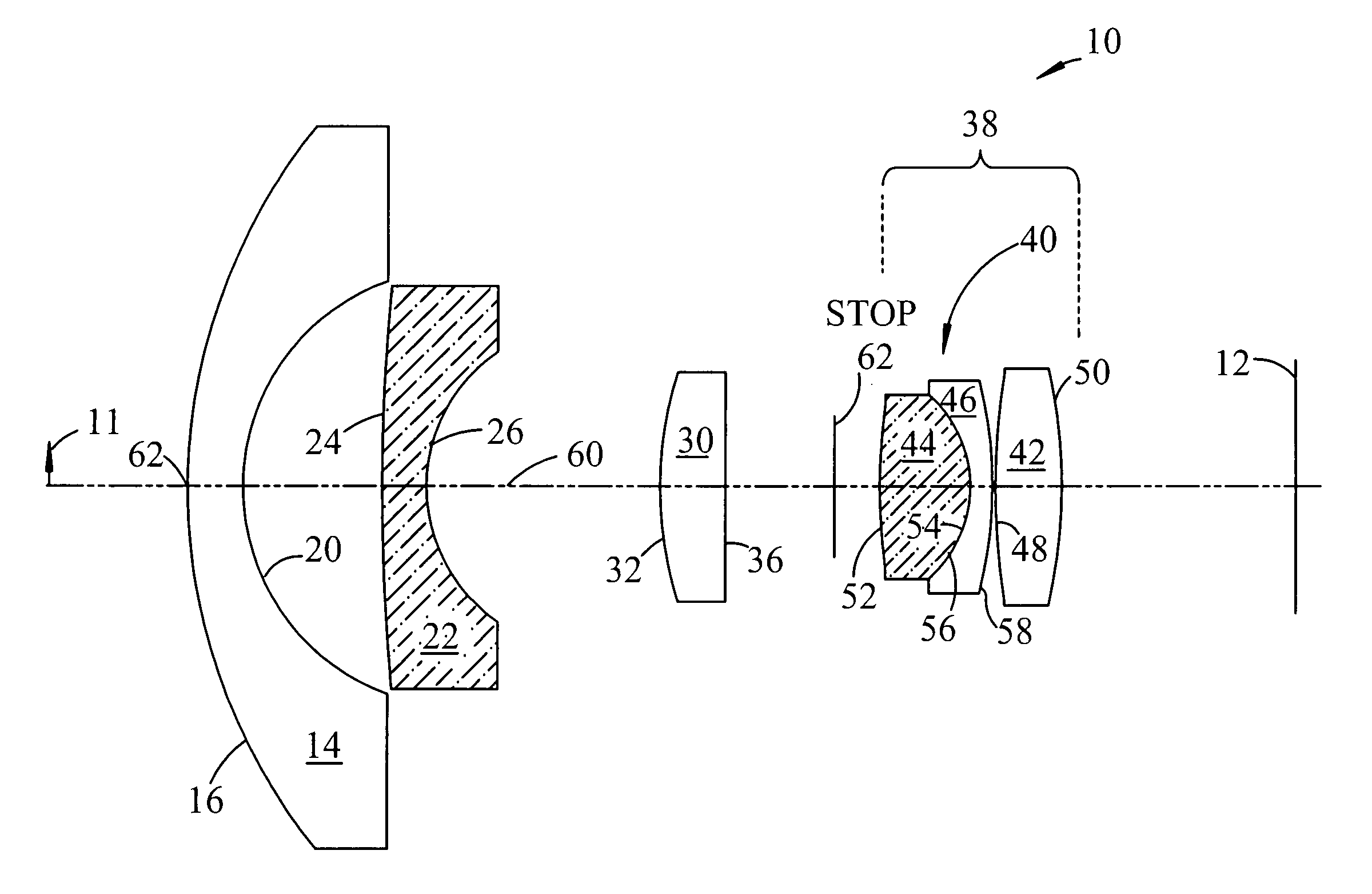Compact fisheye objective lens
- Summary
- Abstract
- Description
- Claims
- Application Information
AI Technical Summary
Benefits of technology
Problems solved by technology
Method used
Image
Examples
first embodiment
[0011]FIG. 1 shows a fisheye objective lens 10 that receives light from an imaginary object 11 in object space from which it forms an image of the object on an image plane 12. The embodiment of FIG. 1 and the embodiment of FIG. 3 have similar lens arrangements for the first three lenses. The description of the first three lenses in FIG. 1 to follow can be read to apply to the first three lenses of the embodiment of FIG. 3.
[0012]Referring to FIG. 1 and FIG. 3, the fisheye objective lens 10 has a first lens element 14 with a convex object surface 16 that faces the object and a concave image surface 20 that faces image plane 12. In identifying the surfaces of the lens elements in FIG. 1, the word “object” is used as an adjective before the word “surface” to identify a surface that faces the imaginary object 11 positioned at the left of the FIG. 1 and FIG. 3 sight windows. The word “image” is used as an adjective before the word “surface” to identify a surface that faces the image plane...
second embodiment
[0034]the fisheye objective lens is made using the prescription found in Table 2 below.
[0035]Table 2 is similar to Table 1 above. Table 2, has a OBJ row which stands for the object in object space. The radius of the image of the object is infinite because the object is at a great distance from the vertex 62 on object surface of the first lens 14. The Thickness column shows the distance from the object to vertex 62 to be infinite. Row 1 characterizes the first lens 14. Surface (16) has a radius of 14.56 mm. The lens thickness at the vertex is 1.0 mm. The Index column 1.754 and the Abbe Number is 52.32. On row 2, the value 2.44 appears in the Thickness column. This value represents the distance from the vertex on surface 20 to the vertex on second lens element object surface 24. The radius of the first lens element image surface is 4.30 which is more than double the distance from the vertex of the concave image surface 20 to the vertex on convex object surface 24.
[0036]Rows 5 and 6 ch...
PUM
 Login to View More
Login to View More Abstract
Description
Claims
Application Information
 Login to View More
Login to View More - R&D
- Intellectual Property
- Life Sciences
- Materials
- Tech Scout
- Unparalleled Data Quality
- Higher Quality Content
- 60% Fewer Hallucinations
Browse by: Latest US Patents, China's latest patents, Technical Efficacy Thesaurus, Application Domain, Technology Topic, Popular Technical Reports.
© 2025 PatSnap. All rights reserved.Legal|Privacy policy|Modern Slavery Act Transparency Statement|Sitemap|About US| Contact US: help@patsnap.com



